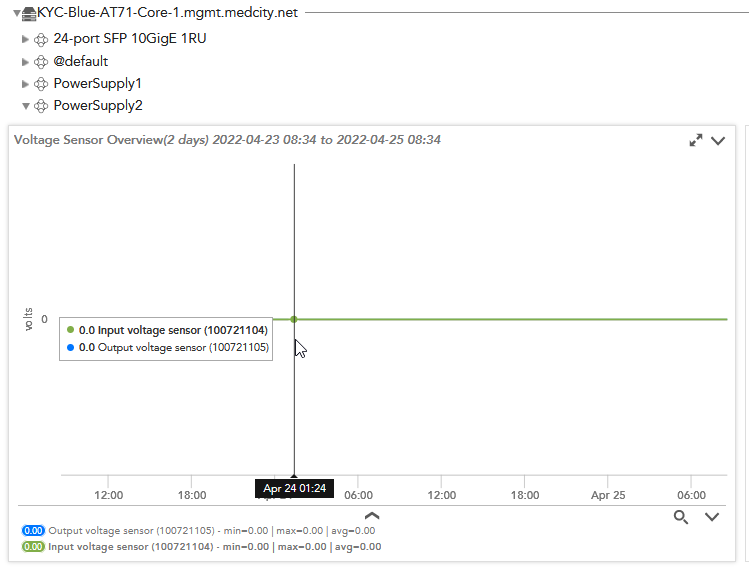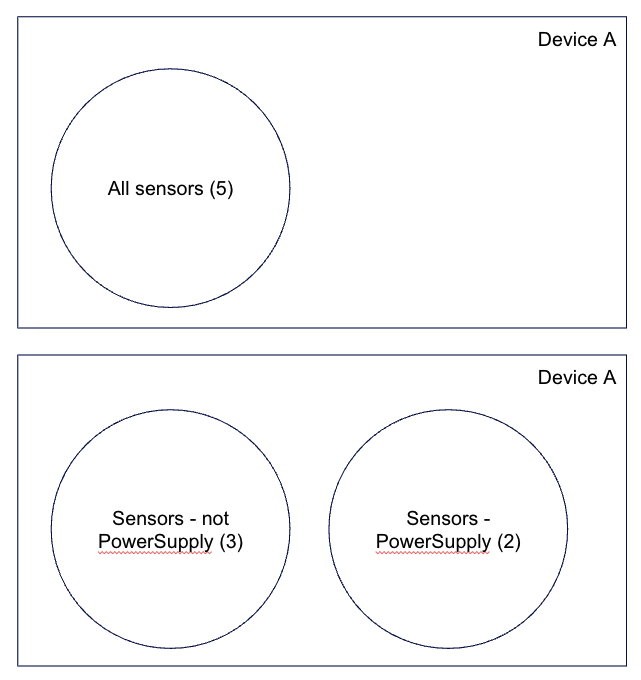 Neophyte
NeophyteSetup for Python 3.x to Query LM looking at Arista Voltage Sensors - Just PowerSupply
Looking for examples to setup Python 3.x usage of the API for v2 - Perhaps in GitHub?
I learn best by example and I'm looking for examples that others have done for successful setup and use of Python 3.x API V2.
I'm looking for device information on Arista devices, Arista Voltage Sensors - but just the ones that have PowerSupply (could have multiple entries).
We discovered that some of the dual power supplies were not connected to power supplies and did not have any alerts on that fact.
There is a Voltage Alert - but that also alerts on the on the POE and other power items besides just the PowerSupply marker.
Any help and points would be welcome.
Of course when this is done- I need to check all the other vendor device types and create queries for those as well.
Thanks for your help and pointers to learn from examples that others have done.
I have upload a picture of both one that shows good values and one that shows bad values.
Henry Steinhauer -




